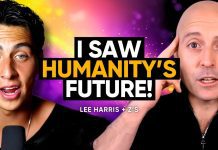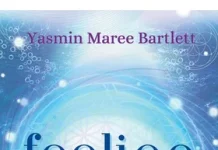
Discover what is standing in your way of personal and professional success. WholeView is founded on 6 Basic Principles.
The quest to uncover what is stopping us from being the best we can be is honourable. But what happens when we seem to be constantly rummaging through our own psyches, hunting for what is standing in the way of our personal and professional success? If success is evading you, or you need a solution for a life issue, you may be a candidate for the well-constructed WholeView Process Read about the 6 Basic Princples and more…
Six basic principles of the the WholeView Process.
- Things are the way they are because they are restrained from being otherwise (restraints may be external or internal.)
- Collateral energy exists.
- The network of restraints act as a filter to news.
- Difference makes the difference.
- Highly restrained systems need high impact news.
- The system will only change when the person is ready for change.
The quest to uncover what is stopping us from being the best we can be is honourable. But what happens when we seem to be constantly rummaging through our own psyches, hunting for what is standing in the way of our personal and professional success? If success is evading you, or you need a solution for a life issue, you may be a candidate for the well-constructed WholeView Process
Almost two decades of study and testing resulted in the emergence of the WholeView Process. Ian Bland and some of his colleagues at Pep Employment Services in Western Australia were the creators of the forerunner to WholeView called Insight. It was developed to assist individuals living with a disability to make positive choices and set personal goals that were achievable.
Through observation and research with their clients it became apparent that an individual’s system of personal restraints acts as an inhibitor to change and their ability to make decisions.
The WholeView process was designed to bypass the filters that restrain a person and to uncover unconscious patterns, ways of interacting and behaving that stop an individual attaining his or her goals. It is a self directed process that enables a person to create and achieve their goals and dreams and to act to make changes in their life.
Embracing problem-solving approaches, WholeView is “experience-centred†and has a theoretical base built on reliable cognitive learning theory, role theory and cybernetic theory.
What makes it easy?
The participant sets the goal and focus of the WholeView session. The facilitator works with the participant to clarify the goal, purpose or dream he or she wishes to explore during the session. Then the facilitator listens to the participant’s story and scribes the process, mapping the conversation on paper. This helps identify what is restraining the person’s system and what will make it easy to move forward and achieve the desired goal, purpose or dream.
Creative thinking is an integral part of the process. It becomes clear that a person’s patterns are affected by perceptions, values, beliefs, attitudes and feelings, which are not related to outside pressures or stimuli.
The WholeView Process often draws upon Stephen Karpman’s model, “The Drama Triangleâ€, and the powerful roles of Persecutor, Rescuer and Victim in communication and professional relationships. After the WholeView session, reflective discussion facilitates awareness of the dynamics of the Drama Triangle and its impact on communication and relationships. The facilitator assists the participant to explore and develop counterpoint roles in their relationships. Opportunities are provided to actively develop and practise new roles.
To summarise the session, the facilitator provides a letter of feedback giving further insight into the process after which a plan of action can be created. Mentoring sessions are available to follow up the process.
Empowering collaboration
The solid foundation of the WholeView Process enables it to meet individual or organisational requirements. It provides a vehicle to develop and consolidate collaborative relationships, both personal and in business
For professional organisation it facilitates the development of a self directed plan of action clarifying resource requirements. As the process unfolds it provides a clear record in the person’s own words thus offering the client or group a memory aid, a resource assisting the ongoing consideration of the whole picture, a systemic perspective, and a simple basis for review and planning, and can provide a basis for understanding developmental processes.
Organisations have reported increased creativity, improved communications and collaboration in the changes being sought.
Contact Jacquie Walker 0427 277 803 for more information and to book a session.










































